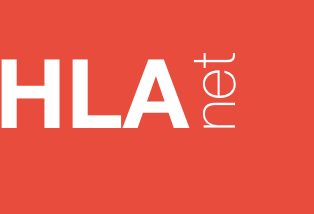We are really proud of publishing our HLA & malaria study of Africa in Molecular Ecology: you can get it, as well as related information, from our publication’s page. Your comments are welcome.
Saludos from the 17IHIW
by Monterey Bay, California.
One thing that usually surprises Europeans is how much bigotry and creationism are spread in this paradise of science and technique that the USA are supposed to be.
Looks like astrology or lovetalk but in an opposite mode, that is, we don’t really read and use horoscopes, but we talk as if the subject deserved some credit. I start to believe that it is a general feature of this country’s culture. Here I’ve seen a lot of talk about population genetics but then no use of it.
If a sample does not conform with Hardy-Weinberg expectations then the sample frequencies are at most sample frequencies and certainly not *population* frequencies. If a sample is in Hardy-Weinberg equilibrium then it makes no sense to say that the population is composed of two or three different sub-populations, as, if it was the case, the Wahlund effect would ensure deviation from Hardy-Weinberg expectations: you can’t have simultaneously two exclusive situations.
Mannheim: Open Meeting of the EFI Population Genetics Working Group
Tuesday May 30 from 15:30 to 17:00, just before the Official Opening Ceremony
Room: GM III
See the complete program in the official EFI-2017 website.
We are waiting for you ;-)
[Publication] Mapping the HLA diversity of the Iberian Peninsula
Mapping the HLA diversity of the Iberian Peninsula
Iñigo Romòn, Carmen Montes, Dario Ligeiro, Hélder Trindade, Alicia Sanchez-Mazas, José Manuel Nunes, Stéphane Buhler
Human Immunology 2016, 77 (10): 832-40
… These results outline the genetic landscape of the Iberian Peninsula, and confirm that the analysis of the HLA polymorphism may reveal relevant signatures of past demographic events even when data from donor registries are used. This conclusion stimulates future developments of the Spanish registry, presented here for the first time.
There are some really nice graphs in the paper.
[Publication] Joint divergent asymmetric selection
Immunogenetics. 2016; 68: 401–416.
Published online 2016 May 27. doi: 10.1007/s00251-016-0918-x
HLA class I molecular variation and peptide-binding properties suggest a model of joint divergent asymmetric selection
… We thus propose that HLA-A and HLA-B evolved through a model of joint divergent asymmetric selection conferring all populations an equivalent immune potential…
It is on open access: https://www.ncbi.nlm.nih.gov/pmc/articles/PMC4911380/
Enjoy.
EFI Population Genetics Working Group: Open meeting
Wednesday 11 May 201
Location: AEGLE B HALL
Population genetics at EFI
12:00: Alicia Sanchez-Mazas
Summary of current work, new objectives & challenges
12:10: Derek Middleton
Allelefrequencies.net
12:20: José Manuel Nunes
HLA-net
Ongoing HLA population studies
12:30: Thomas Goeury (Geneva)
From SSO to NGS in HLA population studies: the case of Mandenka
12:42: Iñigo Romón Alonso (Santander)
The HLA genetic landscape of the Iberian Peninsula
12:54: Sebastiaan Heidt (Leiden)
HLA population genetics in organ transplantation: EUROSTAM
13:06: Lisa Creary (Stanford)
HLA population Genetics in disease associations: schizophrenia
Questions & concluding remarks
13:20: Alicia Sanchez-Mazas

